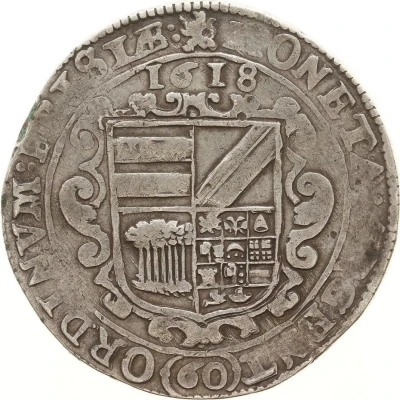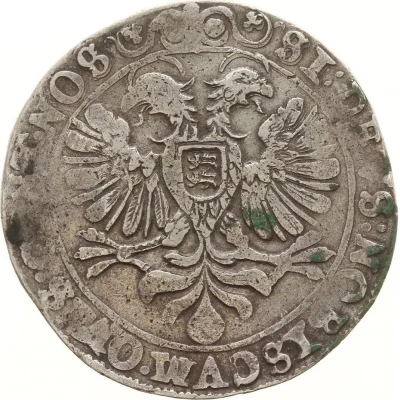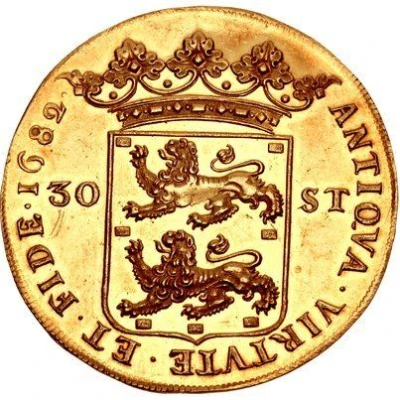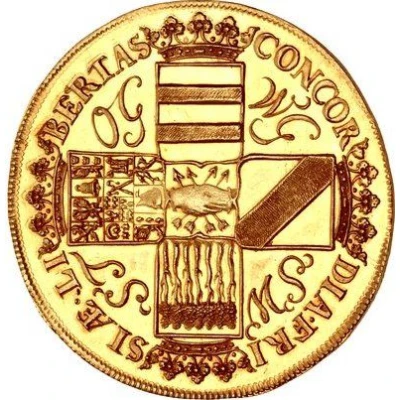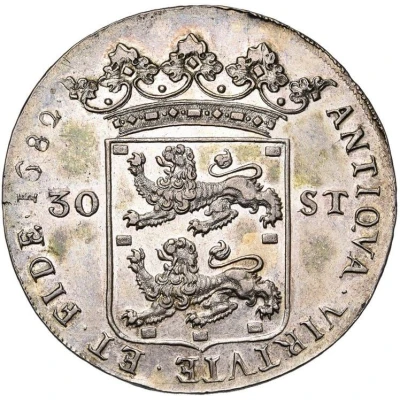
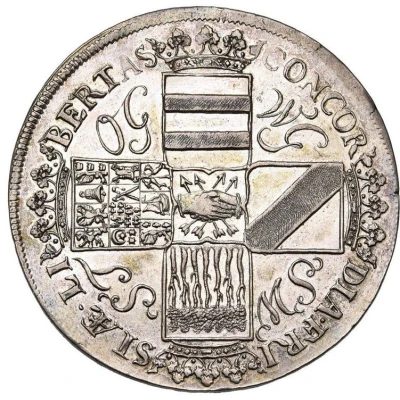

© Jean Elsen & ses Fils s.a.
30 Stuivers
1682 year| Silver (.757) | 19.19 g | 40 mm |
| Issuer | Province of Friesland (Dutch Republic) |
|---|---|
| Type | Standard circulation coin |
| Year | 1682 |
| Value | 30 Stuiver = 1 Koggedaalder (3⁄2) |
| Currency | Gulden (1581-1795) |
| Composition | Silver (.757) |
| Weight | 19.19 g |
| Diameter | 40 mm |
| Shape | Round |
| Technique | Hammered |
| Orientation | Medal alignment ↑↑ |
| Demonetized | Yes |
| Updated | 2024-10-06 |
| Numista | N#59666 |
|---|---|
| Rarity index | 100% |
Reverse
Crowned shields of Oostergo, Westergo, Sevenwolde and the eleven cities in form of a cross. At center, shaking hands over a bundle of arrows. In the corners, abbreviations in script of the four regions
Script: Latin
Lettering:
CONCORDIA · FRISIÆ · LIBERTAS
OG WG SW ST
Comment
Varieties:Two varieties are known, based on the reverse legend and positions of the initials between the shields reverse
- CONCOR - FRISIÆ - LIBER - TAS. Initials OG WG SW ST begin at upper right, below CONCOR (Delm S 1087):
© Sincona AG
- CONCOR - DIA FRI - SIÆ LI - BERTAS. Initials OG WG SW ST begin at upper left, under BERTAS (main photos, Delm S 1088)
Interesting fact
The 30 Stuivers coin from the Province of Friesland (Dutch Republic) in 1682 has an interesting feature. It has a unique design element - a small hole in the center of the coin, known as a "nail hole." This hole was added to the coin to help people tell the difference between genuine coins and counterfeit ones. It was a common practice in the 17th century to add a small hole or a raised bump to coins to make them easier to authenticate. This feature makes the 30 Stuivers coin from Friesland stand out and serves as a testament to the innovative techniques used in coinage during that time.
